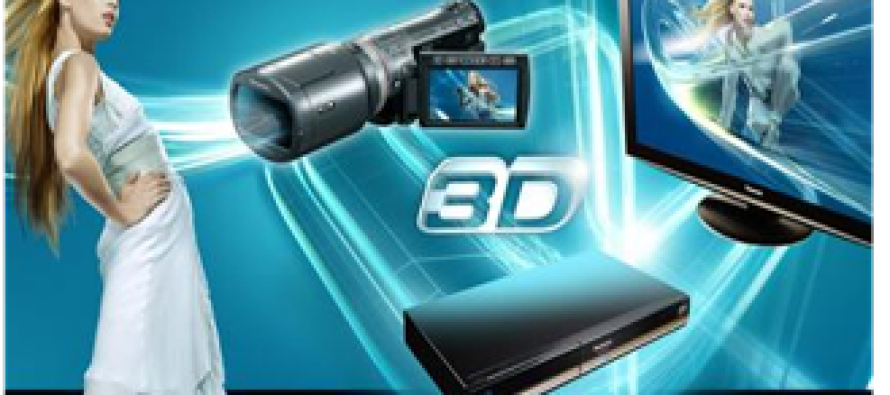From IFA 2010 Desk – Berlin

How touch screens and 3D graphics represent the future of technology By Matt Warman, Consumer Technology
The technology that is set to emerge over the coming months and years will be better connected, easier to use and will likely embrace the latest 3D gimmicks. That’s the message that all the major manufacturers are delivering at IFA (consumer electronics unlimited 2010), Europe’s biggest technology fair, which is taking place in Berlin this week.
In practice, those trends mean that television will increasingly be connected to the web – Panasonic, for instance, is placing increasing emphasis on its “Vieracast” technology. This allows YouTube and Eurosport to be played “on demand”, and will now also offer 3D movies on demand. The development continues a trend that’s been going on for some time, but manufacturers are increasingly signing deals for films and programmes that distinguish their devices from other brands, and building in the Intel chips that make it all possible.
The star of the show, however, is likely to be Samsung’s Galaxy Tab – pitched openly as an iPad rival and launched today, the device continues the battle that’s already going on between mobile phones from Apple and those using Google’s Android operating system. Regardless of what each device can do, or, more importantly, the relative merits of each interface, it means that the tablet computer, previously derided as a gadget to solve a problem that didn’t exist, is here to stay. And tablets of all sorts, too, are successful because of the content, from newspapers to websites to books to films, that they allow users to view in a more intuitive way.
Increasingly, it’s about technology getting out of the way, and simply providing new ways of doing old things. Talk to the owners of new ebook readers, for instance, putting thousands of books into a tiny package, and that’s the message: technology, finally, is something to use, rather than to notice.
3D technology
For several years, projectors have been threatening to take a meaningful chunk of the TV market – providing a more cinematic experience yet needing a lot less space than that required by a giant TV, the prospect is attractive. Indeed, because few people who watch breakfast TV would like to do so on a 10 in screen, the industry has also seen the technology as a chance to expand, because people often buy projectors as well as small TVs for everyday use. With Sony’s full-HD 3D projector, that idea becomes even more likely, because it offers a massively improved experience for true cinema fans, in an area where, increasingly, 3D is being used by movie makers keen to explore new territory.
For more conventional televisions, however, Panasonic’s new Viera TVs are complemented by 3D Blu-ray, 3D camcorders and 3D home cinema systems; the releases shouldn’t be taken to mean that 3D will be the standard way of viewing all images, but certainly do indicate that 3D will be a ubiquitous option for consumers. It remains to be seen how rapidly the technology will actually be embraced, but it is certain that in a very short while it will be increasingly difficult to buy consumer technology that is not 3D-ready in some sense. As if to emphasise the rapid pace of development, it’s also worth noting that Panasonic is releasing a Blu-ray disc player with an ultra-fast start up time.
Tablets and ebook readers
The Samsung Galaxy Tab has been heavily trailed on the internet, and consumer reaction has been enormously positive. As people have seen the iPad and how users have taken to it, appetite has grown for an equivalent device that doesn’t enforce Apple’s systems on users, and, many hope, carries a lower price tag. The Galaxy Tab is based on Samsung’s Galaxy S phone, but features a larger touch-screen and Google’s latest Android operating system, version 2.2. This means that its range of features, including the ability to set up its own Wi-Fi network, is technically greater than that of the iPad. But more crucial to its success will be the device’s ability to attract a range of users to an interface that is impressive but not yet as polished as the iPad, and whether software developers will be as keen to develop for a platform that has not yet proved its worth to the same extent as Apple’s. Increasingly, the signs are looking good for Google.
The new Reader Pocket and Touch Editions feature elegant aluminium designs and new, more highly responsive touch screens. The restyling, however, also reduces the devices’ size and weight. Both can store up to 1,200 books. In these two tablets, however, there are distinct purposes: while the Galaxy Tab is a fine ebook reader, it does not have the long battery life and book-like screen of the Sony devices. For now, it seems likely that the categories of devices will remain separate, even if in time the idea of carrying around two tablet computers will seem bizarre.
Music and movies
Other developments at IFA included the announcement from music service Spotify that it was to integrate with audiophile digital hifi Sonos. The move means that Spotify subscribers, who pay £10 a month for access to a huge library of music, will now be able to use the service without a computer. The development could mean that the idea of simply renting access to music, rather than owning significant quantities outright, continues its journey into the mainstream. Sony, too, is rumoured to be in the final stages of delivering on chief executive Sir Howard Stringer’s promise to connect 90 per cent of its devices to the web and each other by 2011. Using the PlayStation platform, the company is aiming to recover some of the ground lost to Apple, which remains the dominant force in digital entertainment.
Forwarded by ড. আলমামুন আশরাফী


